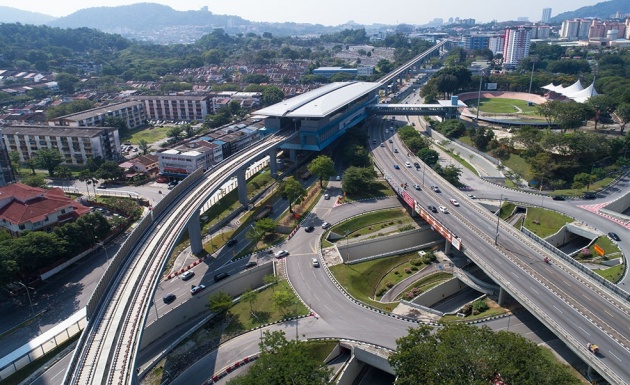The MRT Sungai Buloh-Serdang-Putrajaya (SSP) line will not suffer the same fate as the MRT3 a.k.a. Circle Line, which has been scrapped by the new government. The second MRT line will proceed, but MRT Corp has been tasked by the Council of Eminent Persons (CEP) to find ways to lower the price of the project, Malay Mail reports.
This was revealed by MRT Corp CEO Datuk Shahril Mokhtar after he met the CEP in KL today. “We are working on something, we will have a chat on how to find ways to reduce the cost further for Line 2 (MRT SSP Line). We exchanged ideas but the key is to reduce the cost so we could save the people’s money,” he said, adding that the line is over 24% complete now.
The 52.2 km MRT SSP line will consist of 38.7 km of elevated tracks and 13.5 km of underground tunnels. The first phase of the line, which cost RM32 billion, is expected to be operational by the Q3 2021 before its full completion in late 2022. The first MRT Sg Buloh-Kajang (SBK) line was fully opened in July last year.
Prime minister Tun Dr Mahathir Mohamad announced on May 30 that the government is cancelling the MRT3 project, which was to be a loop line of the Greater KL/Klang Valley integrated transit system. Originally targeted for completion by 2025, the 40 km MRT3 was to have 26 stations with 32 km of it built underground.
Looking to sell your car? Sell it with Carro.












AI-generated Summary ✨
The comments highlight the importance of cost reduction and safety in the MRT Sungai Buloh-Serdang-Putrajaya line, with some expressing concern about the proximity of stations—particularly near HKL—to ensure accessibility for the elderly and disabled. There is discussion about the project’s high architecture costs and comparisons to Japanese stations' efficiency. Some comments criticize the government’s handling, accusing past corruption and questioning the transparency of contracts. Others appreciate the project proceeding and believe it will benefit public health access, especially for HKL hospital users, while criticizing infrastructure choices and station placements that could hinder mobility. Overall, sentiments praise cost-saving efforts while emphasizing safety and practicality for users.